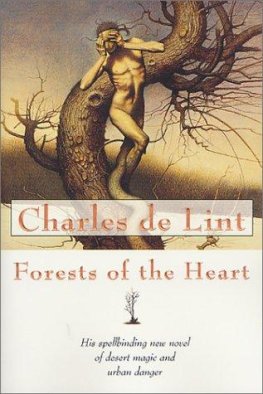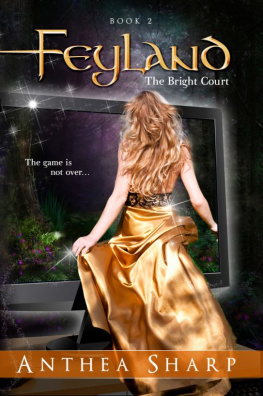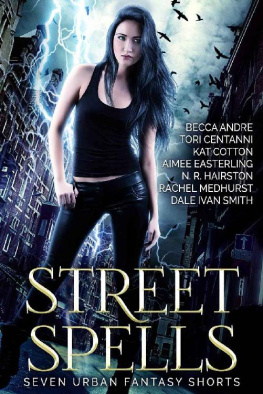Tread softly because you tread on my dreams.
W. B. Yeats, from He wishes for the cloths of heaven
Sources
Uncle Dobbins Parrot Fair first appeared in Isaac Asimovs Science Fiction Magazine, November 1987.
Timeskip first appeared in Post Mortem, edited by Paul F. Olson and David B. Silva; St. Martins Press, 1989.
That Explains Poland first appeared in Pulphouse, the Hardback Magazine #2.
Freewheeling first appeared in Pulphouse, the Hardbook Magazine #6.
Romano Drom first appeared in Pulphouse, the Hardback Magazine #3.
The Sacred Fire first appeared in Stalkers, edited by Ed Gorman and Martin H. Greenberg; Dark Harvest, 1989.
The Stone Drum was first published by Triskell Press, 1989.
Winter Was Hard first appeared in Pulphouse, the Hardback Magazine #10.
Paperjack was first published by Cheap Street, 1991.
Bridges first appeared in The Magazine of Fantasy and Science Fiction, October/November 1992.
Tallulah first appeared in Dead End: City Limits, edited by Paul F. Olson and David B. Silva; St.
Martins Press, 1991.
Small Deaths is original to this collection.
Ghosts of Wind and Shadow was first published by Triskell Press, 1990.
Pity the Monsters first appeared in The Ultimate Frankenstein, edited by Byron Preiss; Dell, 1991.
The Conjure Man first appeared in After the King, edited by Martin H. Greenberg; Tor Books, 1992.
Our Lady of the Harbour was first published by Axolotl Press, 1991.
In the House of My Enemy is original to this collection.
The Moon Is Drowning While I Sleep was first published in Snow White, Blood Red, edited by Ellen Datlow and Terri Windling; William Morrow and Co., 1993.
But for the Grace Go I first appeared in Chilled to the Bone, edited by Robert T. Garcia; Mayfair Games, Inc., 1991.
Creative endeavors require inspiration and nurturing, and these stories are no exception. Id like to take this opportunity to thank a few people who were important to the existence of this collection: First and foremost, my wife MaryAnn, not only for her indefatigable work as first reader and editor, but also for her part in the genesis of many of the individual stories; Terri Windling, for her ongoing support, both professionally and personally, especially with this cycle of stories, and for providing the collections title, which was also the title of her 1992 onewoman art show at the Book Arts Gallery in Tucson, Arizona;
Kris Rusch and Dean Smith of Axolotl Press/Pulphouse Publishing, who were always asking for more stories and provided the first home for many of these;
And for all those other editors who gave me the opportunity to take a holiday from longer work to explore Newfords streets: Bruce Barber, Ellen Datlow, Gardner Dozois, Robert T. Garcia, Ed Gorman, Martin H. Greenberg, Cara Inks, Paul F. Olson, Jan and George ONale, Byron Preiss and David B. Silva.
The book you hold is neither a novel nor a simple gathering of short stories. Rather, it is a cycle of urban myths and dreams, of passions and sorrows, romance and farce woven together to create a tapestry of interconnected dramas, interconnected livesthe kind of magic to be found at the heart of any city, among any tightly knit community of friends. If the imaginary city of Newford is more mythic, more mysterious than the cities you have known, that may be only because youve not seen them through Charles de Lints eyes, through the twilight dreams he weaves out of language and music. Here he spreads these dreams before us and bids us, in the words of Yeatss poem, to tread softly, for urban magic is fleeting and shy .. . and its touch is a transformation.
Joseph Campbell, Carl Jung, James Hillman, LouiseMarie von Franz and others have written eloquently and extensively about the importance of myth in our modern society, the need for tales rich in archetypal images to give coherence to fragmented modern lives. Using archetypes and symbolic language, writes folklore scholar and author Jane Yolen, [fantasy tales] externalize for the listener conflicts and situations that cannot be spoken of or explained or as yet analyzed. They give substance to dreams .. . [and] lead us to the understanding of the deepest longings and most daring visions of humankind. The images from the ancients speak to us in modern tongue though we may not always grasp the meanings consciously. Like dreams, the meanings slip away, leaving us shaken into new awarenesses. We are moved by them, even whenor perhaps becausewe do not understand them on a conscious level. They are penumbral, partially lit, and it is the dark side that has the most power. So when the modern mythmaker, the writer of literary fairy tales, dares to touch the old magic and try to make it work in new ways, it must be done with the surest of touches.
De Lint is one of those writers who mine this vein with a deft, sure touch. Readers new to his distinctive brand of urban fantasy might find his mix of ancient folklore motifs and contemporary urban characters somewhat startlingfor ours is a society that loves to separate and classify, putting fantasy
fiction on a shelf far away from books of realistic or mainstream fiction (despite the fact that the mainstream shelves include works of modern fantasy by foreign authors such as Calvino, Allende and Garcia Marquez). While American book distributors and critics continue to build up genre walls, writers like de Lint are quietly laboring to take them down again, brick by brick, story by story. Forget the labels. Forget the assumptions you make when you think of fantasy, or even short story collections.
And then you will be able to fully enter the enchanted streets de Lint has created.
We enter Newford via the more familiar streets of Los Angeles, via the tales of Newford author Christy Riddell; and then de Lint leads us on to Newford itself, a North American city that might exist anywhere or nowhere, thousands of miles away or just past the next exit on the Interstate. Like any city, Newford has its posh districts, its slums, its daylife and nightlife and the twilight between; but most of all its the street people, the downtown people, that de Lint wants us to meet: the buskers and artists, punkers and gypsies, street walkers and wizards and runaway kids, people for whom magic is not just a supernatural visitation but a manifestation of the souls deepest longings and a bright spark of hope lodged within a desperate heart. The greatest magic on the streets of Newford is the magic of community, of friendship and love, support and compassionfor these are the larger themes de Lint uses the bright symbols of folklore to address.
In Newford, creation is the supreme act of magic, whether that creation be a painting, a fiddle tune or a poem, an AIDS clinic or battered childrens shelter, or ones own family and a harmonious way of life. By these acts we create magic in our own lives; by these acts, large and small, we reinvent the world.
For de Lint, these acts are transformed into stories to nurture the growth of his Tree of Tales, which contains the collective stories of the world:
The Tree of Tales, says de Lints Conjure Man, is an act of magic, an act of faith. Its existence becomes an affirmation of the power that the human spirit can have over its own destiny. The stories are just storiesthey entertain, they make one laugh or crybut if they have any worth they carry with them a deeper resonance that remains long after the final page is turned ....
The interconnected stories of the Newford cycle are a particularly lovely new limb on that ancient tree, and one that shall grow and flower beyond the pages of this single book as de Lint continues to explore Newfords myriad streets.







